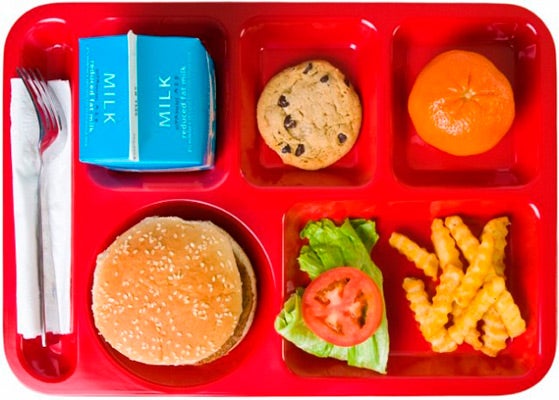School lunches just got better
Published 1:22 am Friday, May 5, 2017
Administration dials back rules limiting salt, milk, grains
There may be good news in terms of taste in the school lunch department, after the Trump administration announced it would roll back some standards set by the Obama administration.
Agriculture Secretary Sonny Perdue announced the rollbacks this week.
New rules requiring nonfat milk, less sodium and more whole grains were set to go into effect later this week. Now, schools will be able to serve 1 percent milk, and still receive subsidies for free and reduced lunches from the federal government, The Associated Press reported.
Local Child Nutrition Program directors were excited about the news.
“Yes, we are very excited about the news that broke (this week) from Sonny Perdue,” said Shan Burkhardt, CNP director for Andalusia City Schools. “I actually had the opportunity to go to Washington, D.C., with 40 other CNPs in Alabama at the beginning of April to the Legislative Action Conference and meet with Martha Roby’s chief of staff, Torrie Matous, and lobby for those changes that he addressed. So it is nice to know what we asked for is coming to fruition and we are looking forward to more changes to come.”
Burkhardt said CNPs asked to maintain the current sodium requirement instead of moving to another sodium requirement.
“The Target 2 level would’ve been very difficult for us to achieve and then moving forward we had another Target 3 level that we were supposed to attain the year after that,’ she said.
Burkhardt said Target 3 would have been nearly impossible and still have a palatable meal for the children.
“We all agree that sodium levels are a main concern for our health and we have drastically lowered those levels, but at the same time we need to be realistic and be able to serve meals that our kids will actually eat and not throw in the trash,” she said. “The other main issue that was requested is that we go back and restore the initial requirement that at least half of the grains offered through school meals be whole grain rich instead of the current 100 percent whole grain rich. This will help us, especially in the South, where grits are so popular and also as far as our bread and baker items are concerned. I just know for me being fairly new to child nutrition, this statement that came down from USDA is a tremendous weight off my shoulders when looking ahead and planning for next year, and I hope that parents and students will be more mindful of all the regulations that we have to deal with.”
Burkhardt said they want as many people as possible to eat in the cafeteria and make it not only healthy, but also tasty.
“But I will say my eyes have been opened since taking this job,” she said. “As an outsider, I never understood what all it takes just to get food on the menu and serve it to the students. Now that I am behind the scenes, it amazes me what hoops we have to jump through to meet all the governmental requirements that are placed upon child nutrition. I can see why it is so important for us as child nutrition directors to go to Washington and lobby for these major issues.”
Carrie Patterson, CNP director for Covington County Schools, said that she is excited about the possible roll back of the national school lunch requirements.
“To my knowledge, no timeline has been established for the new ruling to take effect,” she said. “The changes that I am aware of would allow 1 percent flavored milk, leniency with serving all whole grain products and not moving to phase two of sodium limits,” she said. “The articles I have read make no mention of removing the requirements for fruits and vegetables.”
Patterson said she, too, feels the rollback will help create more student participation in school lunches with the flexibility.
“It has been a challenge to serve good meals that appeal to students and meet the menu planning challenges,” Patterson said. “Our students must participate in our meal programs to get nutrition from the food served.”






